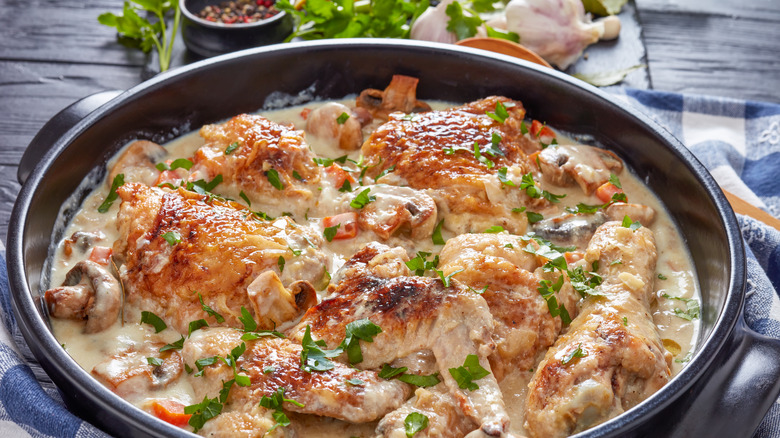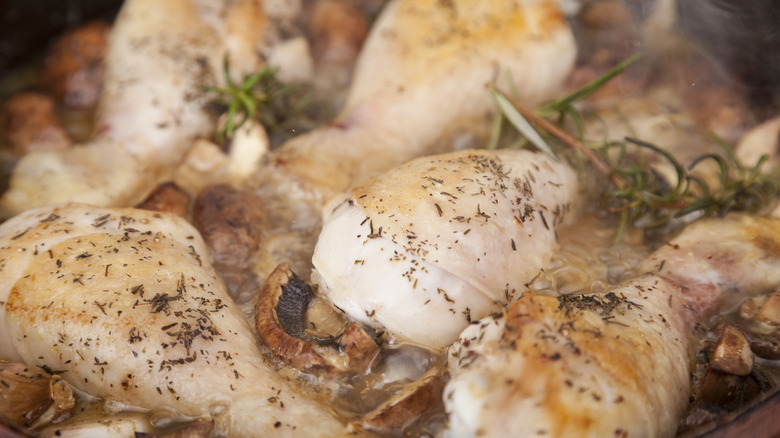What Makes Classic French Fricassee Chicken So Unique
No one could ever accuse classic French cuisine of lacking in flavor. And though we tend to think in terms of haute or nouvelle cuisine, classic French dishes, like a Fricassee of chicken, are unique in their own right.
On the surface, chicken Fricassee looks like nothing more than a creamy chicken stew. While that is, in essence, true, the process by which Fricassee is made is entirely its own. Incorporating both dry and wet heating methods, Fricassee is a hybrid method of cooking. The epitome of a one-pot dish, the chicken pieces and accompanying vegetables are initially cooked in oil and butter before being braised in broth.
However, the main difference between a proper braise and a Fricassee is the fact that you aren't browning the meat beforehand. Instead, with Fricassee the heat is intentionally kept low so the meat stays as white as possible, while still managing to be cooked. Though it is the most common meat to receive this treatment, chicken is hardly the only thing you can Fricassee. Veal is also common, but you can really apply the method to any type of meat, even frog legs, as it turns out. And it's really not at all difficult to do.
How to make Fricassee chicken
In order to keep the meat as white as possible, the cooking fat you choose should be left on low heat. Obviously, as it is cooking, the chicken is not going to stay entirely white. However, the general idea is to cook it gently so that as little browning as possible occurs. You only cook the chicken for a few minutes per side before removing them to a side plate or baking sheet. Thighs and drumsticks work great for this dish.
Next go the vegetables, which are traditionally onion, celery, and white button mushrooms. These are cooked in the fat with a little flour to make a roux. Once the vegetables have softened, white wine goes in to deglaze the pan. Chicken stock and herbs are added, and the chicken itself is returned to the pan. Everything cooks together for 10 minutes with the cover on, and 20 minutes with the cover off allowing the gravy to simmer, reduce, and thicken. Finally, some cream is added to bring richness and color, with a few sprigs of parsley or basil as a finishing garnish.
The best pan to use for those is a sturdy Dutch oven. Not only will this physically fit everything, but the cast iron core will expertly retain and regulate the heat. If you don't have a Dutch oven, a sizable pasta pot or large cast iron skillet will do the trick as well. Whatever you cook it in, you're in for one flavorful meal.

